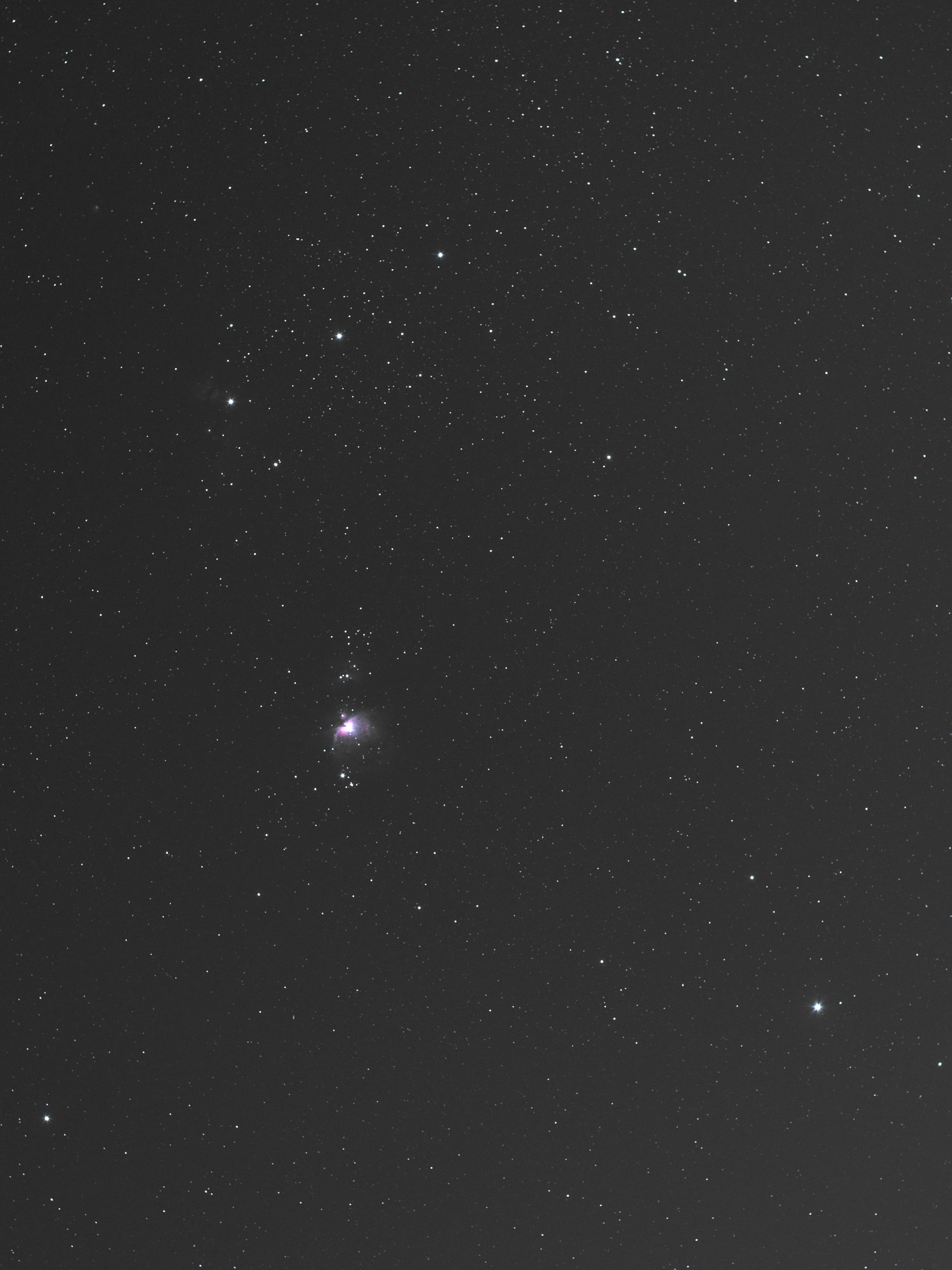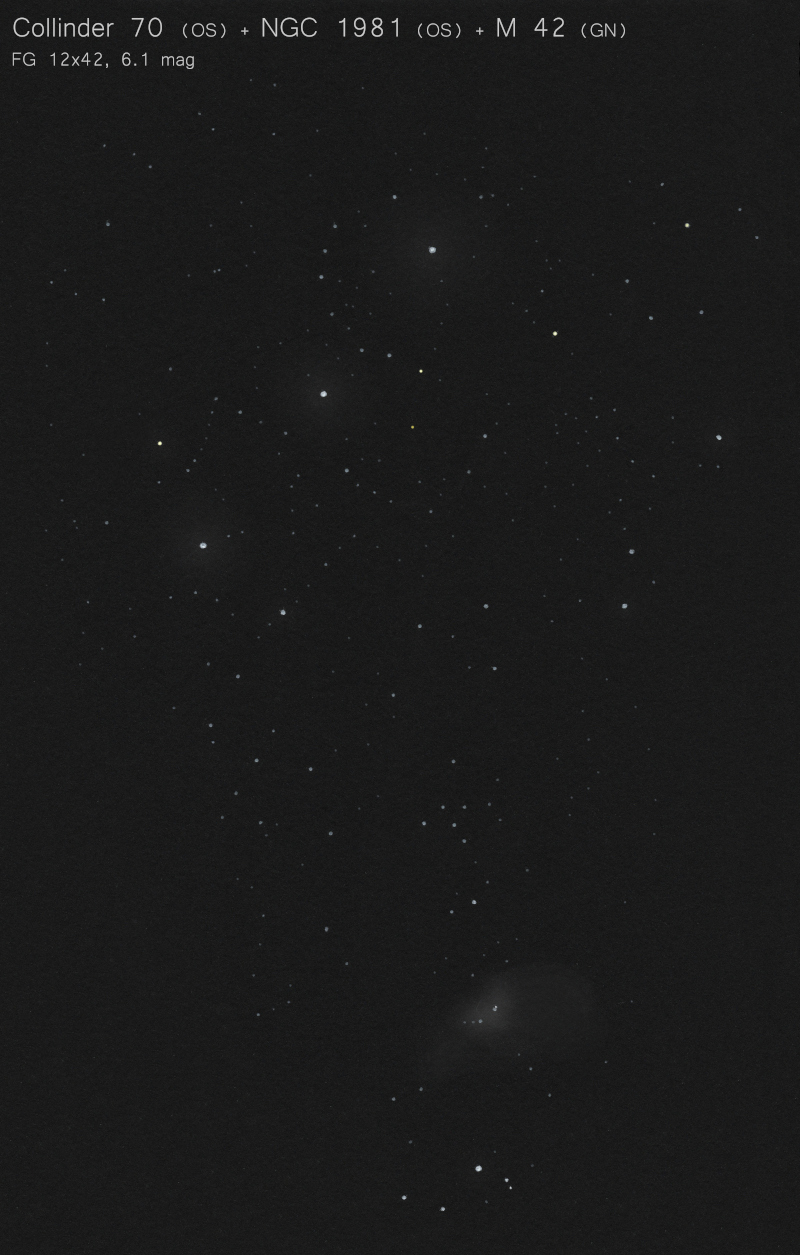Skyguide - Selected objects for every season
The Skyguide is primarily intended to give suggestions for your own observations and will briefly describe selected objects for each season of the year. Both easy and difficult objects will be selected. How difficult an object is depends of course on several factors, especially sky quality, telescope aperture and experience of the observer.
For each object the most important information is given in short form. These are supplemented by photos or sketches. Furthermore, a map, created with the free software Cartes du Ciel (Skychart), is available for a rough orientation. In general, I recommend, to create your own finder charts. The visual description of the object is based mainly on own observations and should serve only as a starting point.
Skyguide 2023-4 (Winter)
Most people in the northern hemisphere are familiar with constellations such as the Ursa Major or Cassiopeia. In winter, on the other hand, Orion is particularly conspicuous and attracts a lot of attention. The so-called belt stars consisting of Alnitak, Alnilam and Mintaka are very prominent here and cannot be overlooked even under heavy light pollution. Orion can therefore truly be described as the symbol of the winter night sky and can be observed from almost anywhere on Earth. There are many myths and stories about its presence in the sky. Greek mythology sees it as a hunter (hence the names such as belt stars or sword hangings around Messier 42), the Germanic tribes see it as a plough. Other interpretations even speak about a war boat or butterfly. However, not only the names vary, but also the objects that can be observed. Many of these objects are already clearly visible with binoculars, and some can also be seen with the naked eye.
We want to concentrate on the central region of Orion around the belt stars and the Great Orion Nebula. The sketch by René Merting shows this region impressively. Alnilam, the middle of the three belt stars, lies in the center of the open cluster Collinder 70, which measures almost 3° in apparent diameter, with the outer belt stars lying on the edge. Striking, partly beautifully curved chains of stars can be seen between them. Binoculars are the ideal instrument for observation. Collinder 70 is one of the largest clusters after the Ursa Major group and is estimated to be 5 million years old. If you have a telescope with an aperture of at least 100 mm, you can also try the uneven double star Alnitak. The angular separation of 2.4 arc seconds of the components requires a higher magnification.
South of Collinder 70, the Great Orion Nebula (Messier 42) is very conspicuous and should be easily visible even under urban skies with moderate light pollution. Due to its size, the irregular shape and brightness distribution are easy to recognize even in binoculars. It is well worth using broadband nebula filters such as UHC or UHC-S on binoculars. In the middle of the nebula lies the famous Trapezium (Theta 1 Orionis), a multiple star system with a total of 8 components. The four brightest components (A - D) are visible as a single star to the naked eye, but in binoculars they can be seen separately depending on the magnification. In 16x70 binoculars, it is almost possible to separate all four components. With a telescope, the fainter components E and F can also be seen at high magnification, as long as the air is sufficiently steady.
Also visible to the naked eye is the open cluster NGC 1981, which is located north of Messier 42. Although the cluster contains only a few, loosely distributed stars, it is still quite conspicuous due to the rather star-poor surroundings. It stands out well at low magnification.
In addition to purely visual observation, Orion is also a beautiful subject for photography. Even with a beginner's camera for everyday use, some objects such as clusters or nebulae can be seen under the city sky. The astronomical accessories that were used for the image below were a UHC-S filter from Baader and the Nanotracker as a small tracking mount. The image processing was kept simple and was limited to the programs Siril and Darktable. Sometimes simple equipment is enough to enjoy this beautiful hobby.

